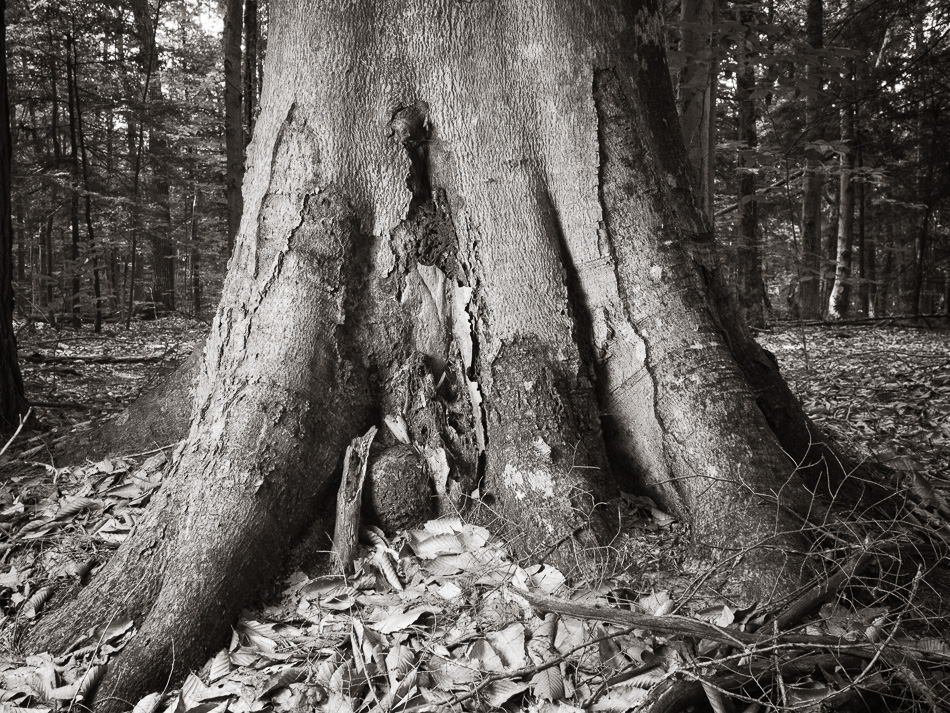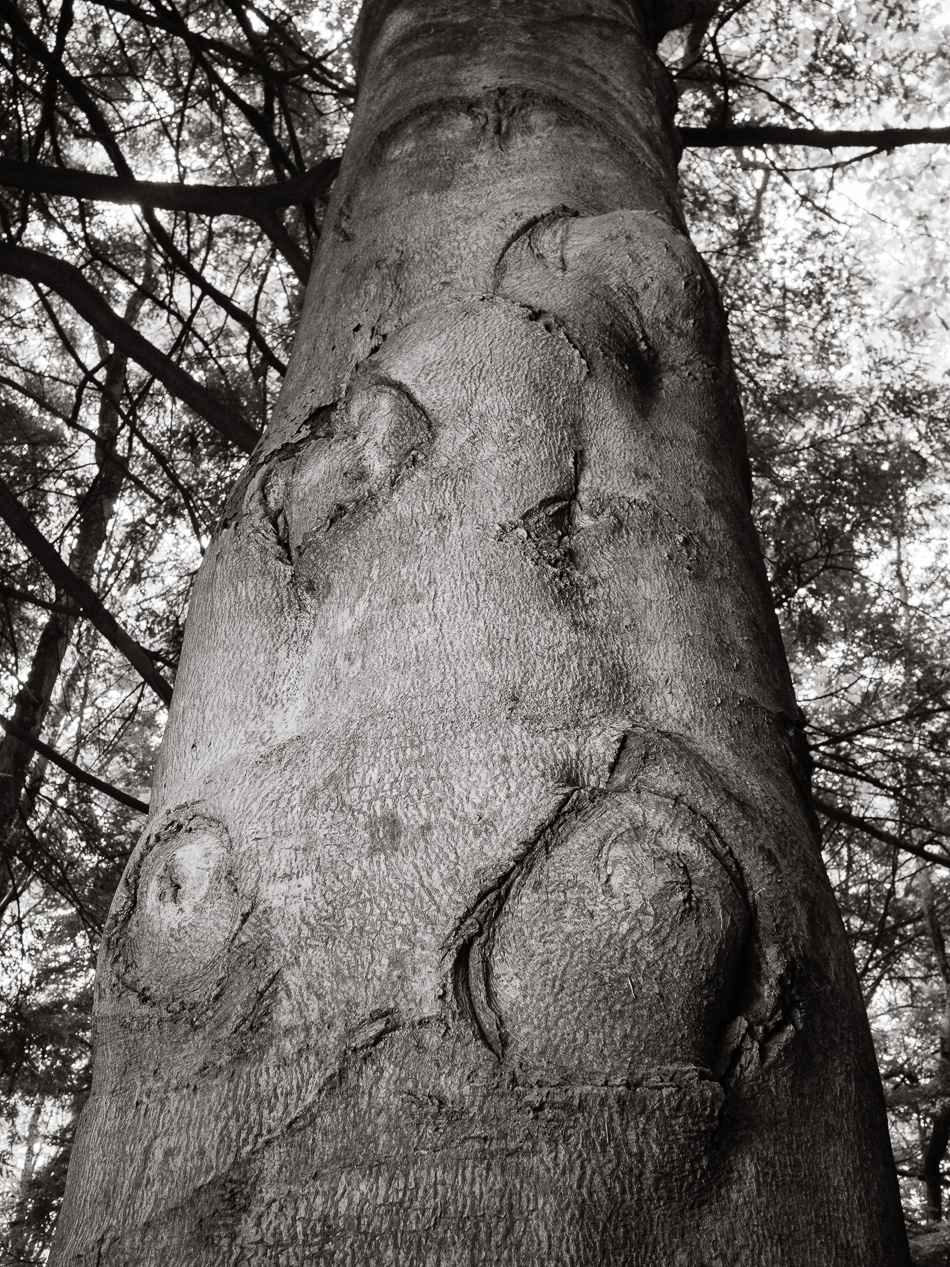Working with a Speedlight In the Forest
For all of the years that I have been practicing photography, I have always considered myself to be a natural light photographer, even at times looking down upon the use of flash and considering it to be unnatural. However, there is a harsh reality that accompanies this line of thinking — I am always forced to accept and work with the light that is given to me, and sometimes that light can be pretty awful. Some of the most interesting subjects that I have encountered in the forest live permanently within the domain of awful lighting, which means that I cannot tell their story. Until now.
Since I focus mainly on black and white photography, light is incredibly important to me. It creates the contrast that adds interest and depth to a two-dimensional photograph, and it helps to reveal subtle detail and texture when the source of the light hits upon the subject at the right angle. Looking more broadly, black and white photography itself is unnatural — most of us see the world in color, so all black and white photos require some manipulation of reality.
There is one final consideration, and it is a significant one. At the present time, I have a full time job that requires me to be in a certain location for a certain period of time five days a week. This means that I have to shoot during my limited free time. If the weather is uncooperative, I can go many days on end without seeing good quality light for photography. This significantly limits what I can achieve as a photographer.
Recently, I did something that was unthinkable just a few weeks ago — I bought my first speedlight, a Yongnuo YN-560-III. I opted to buy this model because it was a manual flash that had very positive reviews, and the price was reasonable at less than $100. It also has an onboard wireless receiver, and I purchased a separate transmitter unit that sits in the hot shoe of my camera. During my research for this purchase, I learned that a manual flash like this one would be more appropriate for the type of photography that I do because it would offer me greater control, and I am almost always working with a consistent subject to flash distance (trees do not tend to move toward me very often.) My wife had already purchased some light stands that included white shoot-through umbrellas for her business, so all I needed was a swivel mount for the flash.
Armed with this new setup, I set out into the forest earlier today to try it out. I intentionally sought an interesting tree in poor lighting conditions for my test. After about 15 minutes of hiking, I found my subject bathed in flat, dull light and began to setup the lighting kit which consisted of a single stand with a shoot-through white umbrella, a swivel mount to hold the umbrella, and a single speedlight. One thing that I already like about flash photography is that it forces me to slow down and think about the light. Unfortunately, this also gave the ravenous mosquitoes an opportunity to feast on the unprotected parts of my body.
For my first shot I set the speedlight to my left and slightly behind the camera, positioning it about two feet from the base of the tree. After experimenting with the camera settings and flash output, I managed this shot:

For the next shot, I extended the stand to almost its maximum working height and angled the speedlight up the trunk of the tree, seeking the reveal the subtle texture in its knotty surface. After a few more adjustments, I produced this shot:

Though I have a great deal to learn, I can already see that the use of a speedlight is going to improve my photography considerably. I now have the opportunity to use light to reveal subjects that were previously impossible to photograph. I can also use light to emphasize individual trees or plants in the forest while de-emphasizing the surroundings. I can also use modifiers like the shoot-through umbrella to fine tune the apparent size and quality of the light source.
I am already finding that this new level of control is helping me to pre-visualize the end result that I am after. The only thing stopping me from realizing the actual photos is my lack of experience with speedlights, something which I aim to correct with a great deal of careful practice. Stay tuned for the results.